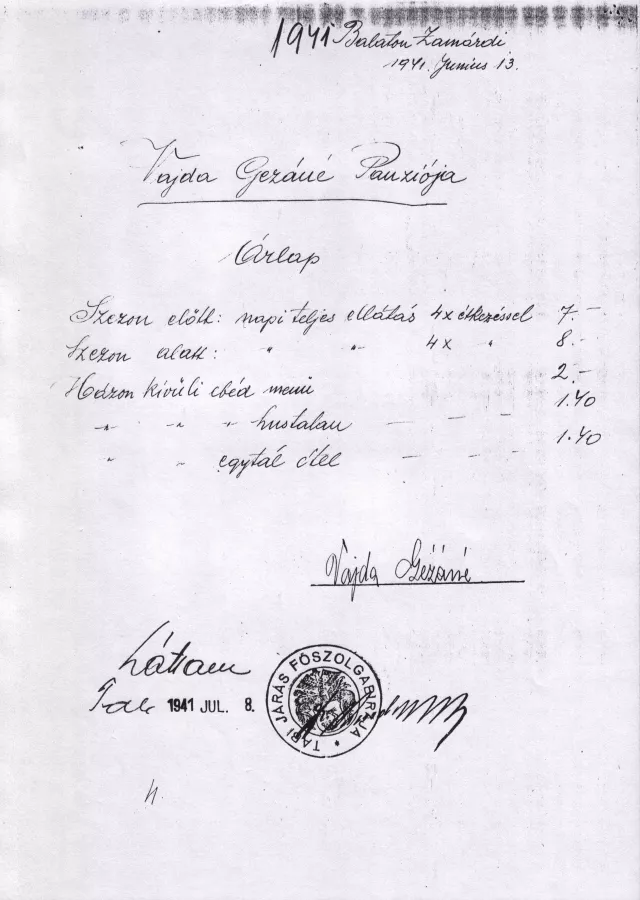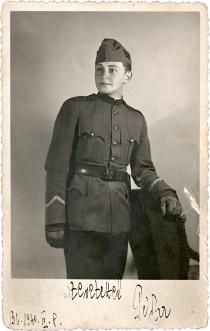The price list of Ilona Vajda's pension
This is a price list from the pension of my father's sister, Geza's wife. [Editor's note: The interviewer found this document in Balatonzamardi, in the document collection of a local village researcher. The local Tourinform office helped in the research.]
My uncle magyarized his name from Geza Weisz to Geza Vajda when he got married. His wife was called Ilona Szerdahelyi. She came from the Szerdahelyi family. She had several siblings. One of her brothers, Aladar Szerdahelyi, was a cork-cutter. He invented the cork and he was the first to manufacture it. [Corks were used to close wine bottles already in the middle ages. The first cork factory was founded in Portugal in 1750.] They made corks for wine bottles. He was very wealthy. My uncle was an accountant. They lived here in Budapest, on Visegrad Street, and my aunt complemented my uncle's salary by taking in boarders, because they couldn't have lived off a clerk's salary. In their apartment there was a small bedroom, and students from the country, who studied here in Pest, lived in there. It wasn't the main criteria, but mainly Jewish children lived there, there were rarely non-Jewish ones. Partly this was because it was much cheaper and it was also much more satisfying for the parents to know that their children were with trustworthy people. The family took on supervision, studied with the children, so that they would have good results. The curfew was 10pm, and they also gave them food, not only accommodation. My aunt cooked for them, and the parents partly paid for it and also sent eggs and meat, chicken and things like that.
My uncle died quite early, but they had a plot in Balatonzamardi and my aunt organized summer holidays there not only for children from the family, but strangers too. The children of relatives also paid her. We spent the summer there every year. We, the children from the family lived in the same summer cottage with them, which my aunt owned, but only the immediate family lived there. There was a bedroom there, a kitchen, and the pantry was also transformed into a room. There was even a toilet built in. This kind of summer vacation lasted for a long time, until the beginning of the war.
It all started with paid summer holidays for children, in the 'small house' at first, then she had the idea that she would serve lunch in the summer house, then around 1935 my aunt decided to build a pension and offer summer holidays for adults too. So she enlarged the existing building, and she had another building annexed to it: the Pension of Mrs. Vajda Géza, it was called later. This was made out of wood and she rented it to summer holiday-makers, and she organized paid summer holidays for the children there later. It was customary at that time that the women went on a holiday with their baby for two-three weeks, and the husbands came there with the so-called bull-train on Saturday afternoon. They spent the Sunday there and my aunt cooked. This was a summer house that only had side walls; it didn't have a roof, and if it rained they covered it so that people wouldn't get wet. The mothers and their children ate lunch there during the week, and on Saturdays and Sundays the entire family did. My aunt gave half portions too, for the little children. After lunch, I remember, she took a bowl with fruit or cookies, took it in the courtyard and passed them around for free. Sometimes the villagers also got some, although children from the village were rarely there. It was a mixed company, not only Jewish families spent the summer and ate in such a way. These people were all so wealthy that they could pay for the accommodation and food. The pension operated from the second half of the 1930s until the beginning of the war.































